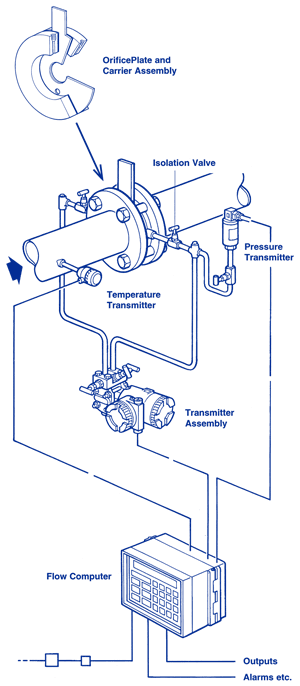Overview of…
Note 16. Measurement of Liquid, Gas, and Heat Flow
Measuring the flow of water, steam, and other liquids and gases plays an important role in keeping systems at peak efficiency. Accurate measurement of flow and heat is part of the energy conservation measures that the Energy Efficiency Manual recommends for a variety of energy systems. For example, it is necessary for adjusting pump output in variable-flow chilled water systems and for controlling air flow in variable-air-volume (VAV) systems. Flow and energy measurement are also important tools for monitoring system performance and for troubleshooting.
Energy meters, commonly called BTU meters or heat meters, are needed to measure the energy content of hot water, chilled water, and steam for accurate billing and other purposes. Energy meters consist of a flow meter combined with thermometers to accurately measure temperature differences, plus a computer to calculate energy flow from these inputs.
Flow metering, heat metering, and energy metering continue to be areas of difficulty, primarily because of installation and calibration difficulty in piping. There are many types of flowmeters because no single type is entirely satisfactory in all respects. A given type of flowmeter may be best for some applications, but inappropriate for others. With all types, installation details are important.
This Note explains the elements of a metering system, and helps you to select the best flow or energy measuring system for your applications. You will learn about the major types, including propeller flowmeters, vortex shedding meters, ultrasonic flow measurement, pitot tubes, venturis, orifice plates, and variable-area flowmeters.
Click here to return to the Table of Contents


